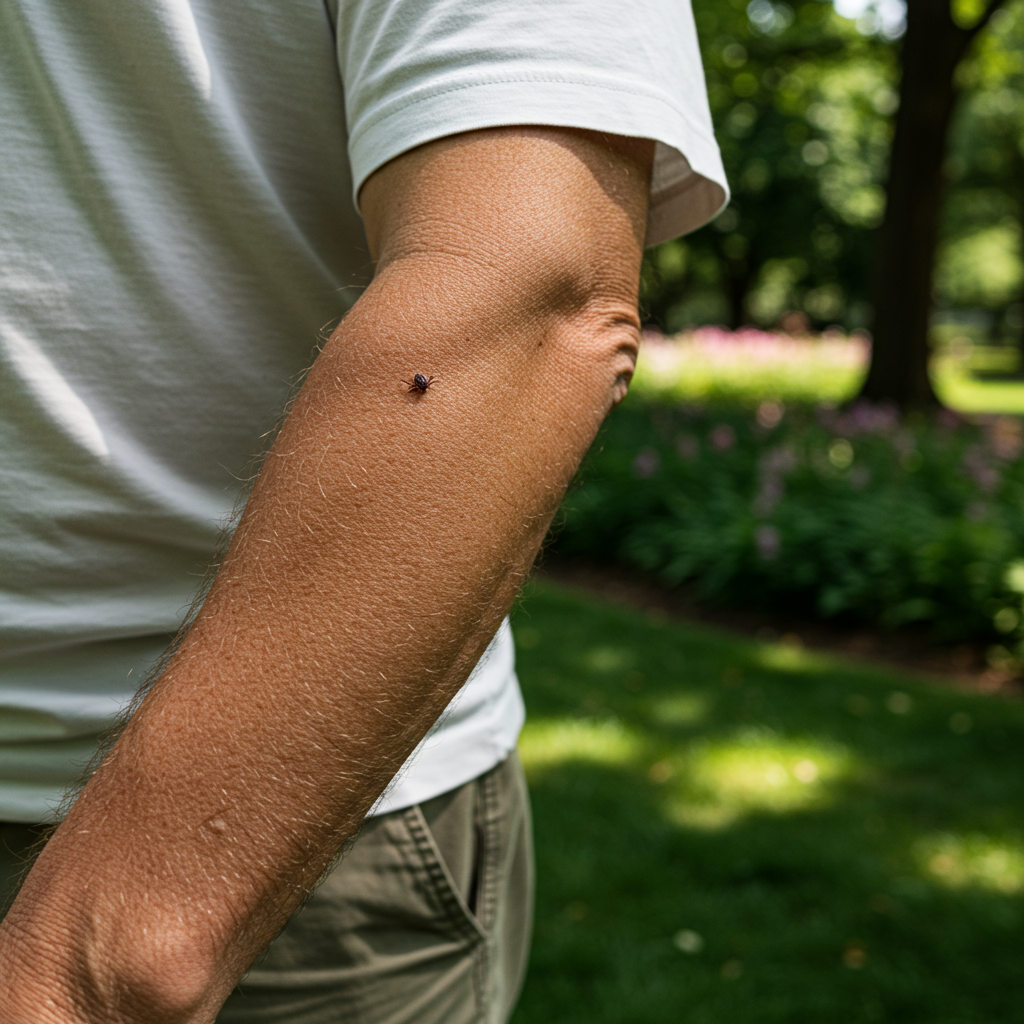As warm weather arrives, spending time outdoors in Washington D.C., Maryland, and Virginia brings opportunities for recreation and relaxation. However, residents and visitors in the DMV area face a growing health concern: the rapid spread of ticks and the diseases they carry. Experts are issuing warnings as tiny, potentially dangerous arachnids become more prevalent across the region. Understanding the risks and taking simple precautions can significantly protect you and your family this season.
The Alarming Rise of Tick-Borne Illnesses in the DMV
The black-legged tick, also known as the deer tick (Ixodes scapularis), has long been known for transmitting Lyme disease, a serious bacterial infection. But a new threat is becoming increasingly common in the Mid-Atlantic: babesiosis. This bloodborne pathogen attacks your red blood cells. If left untreated, it can lead to severe anemia, damage to vital organs, and even be fatal.
Historically, Babesiosis was primarily confined to the Northeast United States. However, a recent study published in the Journal of Medical Entomology highlights a concerning trend. Deer ticks, and the pathogens they carry like the one causing Babesiosis, are now rapidly expanding their range southwards. Virginia and Maryland are seeing a significant increase in these ticks. This expansion means the risk of encountering an infected tick is higher than ever in the DMV.
Ticks don’t just drop from trees, despite a common myth. According to experts, they live in leaf litter and low vegetation on the ground. They wait there, sensing body heat and carbon dioxide. When a person or animal brushes past, the tick quickly crawls onto its host, seeking a spot to attach and feed. Humans and pets are primary targets. Ticks are often described as “starved” after hatching. They require a blood meal to grow into the next life stage.
Understanding the Babesiosis Threat
Babesiosis is caused by Babesia parasites. These microscopic organisms are injected into the bloodstream when an infected black-legged tick bites you. The parasites then invade and destroy red blood cells. This destruction is what causes symptoms.
While some people infected with Babesiosis may show no signs at all, others develop flu-like symptoms weeks after a bite. These can include fever, chills, sweats, headache, body aches, loss of appetite, and fatigue. Because these symptoms are so non-specific, the infection can be easily missed or misdiagnosed initially. Online information may still incorrectly state that Babesiosis is rare in the DMV. This can lead to delays in seeking appropriate medical care.
Serious Complications and Vulnerable Groups
Babesiosis can become severe, especially for certain individuals. Older adults and people with weakened immune systems are at higher risk. Those without a spleen are particularly vulnerable. In severe cases, the disease can lead to complications. These include severe anemia due to red blood cell loss. Other potential issues are kidney failure, liver problems, organ failure, and even death.
It is crucial to tell your doctor if you have been in tick habitats or found a tick attached to you, even if symptoms appear weeks later. Healthcare providers in the region are becoming more aware of this expanding threat. Providing this information helps ensure they consider Babesiosis and other tick-borne illnesses in their diagnosis.
More Than Just Babesiosis: Other Tick Risks
While the black-legged tick and Babesiosis are significant concerns, other tick species are also expanding into the DMV. These different ticks carry different diseases.
One example is the Gulf Coast tick. This tick species has moved into Virginia over the last decade. It is known to transmit Tidewater Spotted Fever. This disease can cause a fever, rash, and other symptoms. Cases have been reported particularly in areas like Hampton Roads.
Another emerging threat is the Asian Longhorned tick. This is an invasive species first detected in the U.S. in 2017. It is now established in Virginia, Maryland, and many other eastern states. Scientists are still studying all the potential diseases this tick can transmit to humans and animals. While it does not carry Lyme disease, it can impact livestock health. Its ability to reproduce asexually means populations can grow very quickly.
The expansion of multiple tick species highlights the increasing need for vigilance across the region. Different ticks prefer different habitats. Some are found in woods, others in tall grasses. Knowing which ticks are prevalent locally helps assess risk.
How Ticks Attach and Why Removal Matters
Ticks have specialized mouthparts designed for feeding on blood. When a tick finds a suitable spot on a host, it inserts its barbed, straw-like mouthpart deep into the skin. To help anchor itself, the tick also secretes a gluey saliva. This makes it difficult to dislodge.
Ticks typically remain attached for several days to get a full blood meal. A black-legged tick often feeds for three to four days. After feeding, it will naturally detach and drop off. It then molts to grow into the next stage of its life cycle. The longer a tick stays attached and feeds, the higher the chance it can transmit pathogens if infected. Early removal is critical to reducing disease risk.
If you find a tick attached, remove it as quickly as possible. Use fine-tipped tweezers for this process. Grasp the tick as close to the skin’s surface as you can. Pull upward with steady, even pressure. Avoid twisting or jerking the tick. This can cause the mouthparts to break off and remain in the skin. After removal, clean the bite area and your hands thoroughly with rubbing alcohol or soap and water.
It is a good idea to save the tick after removal. Place it in a sealed container, like a ziplock bag. Add a small piece of damp paper towel to keep it from drying out. Note the date you found the tick on the bag. If you develop symptoms resembling tick-borne illness in the following weeks, take the stored tick to your doctor. It can be tested for pathogens, which can greatly aid in diagnosis. Programs like the U.S. Army’s MilTICK program demonstrate the value of tick testing for surveillance and early intervention. Dr. Robyn Nadolny, who leads MilTICK, highlighted the increased tick activity by noting her office received 80 ticks for testing in a single day recently.
Protecting Yourself and Your Pets
Preventing tick bites is the best defense against tick-borne diseases. Several effective strategies can help reduce your risk when spending time outdoors in the DMV.
Use EPA-Registered Insect Repellents:
Products containing DEET are highly effective against ticks.
Alternatives like Picaridin or Oil of Lemon Eucalyptus are also recommended by the EPA and may be gentler on sensitive skin.
Always follow product instructions carefully.
Apply repellent to exposed skin and clothing.
Treat Clothing and Gear:
Clothing, boots, and camping gear can be treated with products containing Permethrin.
Permethrin kills ticks on contact.
Do not use Permethrin directly on skin.
Follow product label instructions precisely for application and duration of effectiveness.
Check for Ticks:
Perform thorough tick checks after spending time outdoors, especially in wooded or grassy areas.
Check your entire body, paying close attention to hidden areas. These include behind the knees, in hair, ears, underarms, naval, and groin.
Check clothing and gear before bringing them inside.
Examine pets that spend time outdoors. Ticks often attach around their ears, neck, and legs.
Other preventative measures include walking in the center of trails when hiking. Avoid walking through tall grass and brush. Keep grass mowed short in your yard. Consider creating a tick-free zone around your home. This might involve using landscaping techniques.
Frequently Asked Questions
What is Babesiosis and why is it a concern in the DMV area now?
Babesiosis is a serious illness caused by Babesia parasites transmitted by infected black-legged ticks (Ixodes scapularis). It attacks red blood cells, potentially causing severe anemia and organ damage. It is a growing concern in the DMV (D.C., Maryland, Virginia) because recent studies show the black-legged tick, which carries the parasite, is rapidly expanding its range from the Northeast into the Mid-Atlantic region, increasing the risk of human infection locally.
How should I properly remove a tick if I find one attached to my skin?
To remove an attached tick, use fine-tipped tweezers. Grasp the tick as close to the skin’s surface as possible. Pull upward with steady, even pressure. Do not twist or jerk the tick. After removal, clean the bite area and your hands thoroughly with rubbing alcohol or soap and water. Saving the tick in a sealed bag with the date can be helpful for potential testing later if symptoms develop.
What are the best steps I can take to protect myself and my family from ticks in the DMV region?
Key prevention steps include using EPA-registered insect repellents containing DEET, Picaridin, or Oil of Lemon Eucalyptus on exposed skin. You can also treat clothing and gear with Permethrin. Conduct thorough tick checks on yourself, children, and pets after outdoor activities. Stay on trails and avoid tall grass. Maintaining your yard by keeping grass short can also help reduce tick presence.
Conclusion
The presence of ticks and the risk of tick-borne diseases like Babesiosis are increasing concerns for everyone in the DMV. As tick season continues, staying informed and prepared is essential. Remember that ticks are most often found low to the ground in leaf litter and tall grass. Taking proactive steps like using repellents, checking carefully after outdoor activities, and knowing how to properly remove a tick can make a significant difference in protecting your health. If you experience flu-like symptoms weeks after a potential tick exposure, inform your doctor about the possibility of a tick bite, even if you didn’t see one or saw it long ago. By raising awareness and implementing prevention methods, the community can better navigate the growing challenge posed by tiny ticks in the region.




